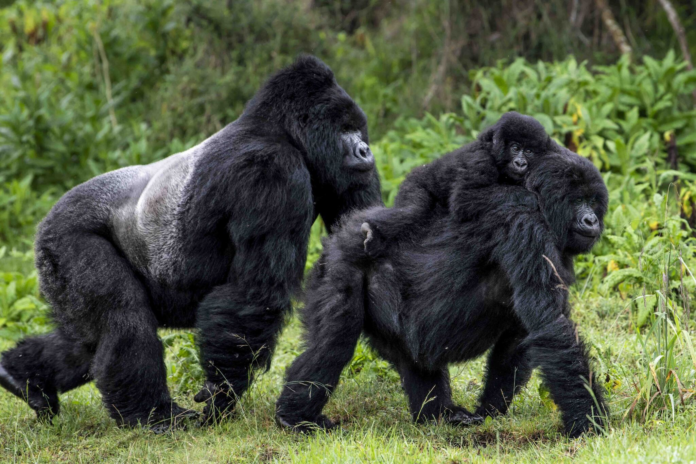Closely related to humans, gorillas tend to be more prone to respiratory infections from humans
By MONICA MANMADKAR — science@theaggie.org
With the closing of zoos and other public attractions, respiratory infections and illness have decreased significantly in their gorilla population. The mountain and eastern lowland gorilla populations’ respiratory health has greatly improved since the start of the pandemic, according to an article by the Gorilla Doctors, an organization dedicated to saving mountain gorilla populations by using veterinary medicine and science.
Research has shown that gorillas can get respiratory infections from humans since they tend to be closely habituated to humans, either for tourism or research. When the pandemic began, there was a cessation in tourist visits to gorillas in Rwanda for most of 2020. Even when the tourist visits resumed, new protective measures were enforced by the Gorilla Doctors for both the tourists’ and the gorillas’ safety, with stricter enforcement of human-gorilla “social distancing” rules.
“It was a logical step to ask if the reduction in human-gorilla contact during the two years of the pandemic was related to a concurrent reduction in the frequency of respiratory illness in the habituated groups,” said Dr. Kelly Stewart, a retired primatologist from UC Davis who studied mountain gorillas, via email. “The data strongly suggest that this is the case. We can say this thanks to the regular health checks on the gorillas by the veterinary program conducted during the pandemic.”
Since zoos closed during the pandemic, the annual average of respiratory illness outbreaks in gorillas fell from 5.4 to 1.6 outbreaks. Although SARS-CoV-2 has not yet been detected in any gorillas, it is important to keep the safety measures in place to protect the Great Apes, said Stewart.
Moreover, Stewart explained how data collected by veterinary and behavioral research programs have produced results that urge the continual protection of these gorillas. This research has helped confirm that humans can pass the disease to wild gorillas and has showcased action items that can help mitigate the risk.
The recent analysis suggests that maintaining an appropriate “social distance” and masking up has an effect on reducing the risk of human-gorilla transmission of any airborne disease. Although veterinary research formed the best practices for gorilla tourism, the tourism industry has pressured National Park services to relax regulations to promote a more enjoyable, realistic tourist experience. The research has shown that this is not worth the risk.
“With summer coming up and tourists heading to zoos more often than last year, it is still important to protect these gorillas and continue wearing masks,” said Dr. Kirsten Gilardi, the executive director and chief veterinary officer for Gorilla Doctors and the director of the Karen C. Drayer Wildlife Health Center at the UC Davis School of Veterinary Medicine.
Gilardi noted how research and the pandemic’s effect on the gorilla population’s health should be kept in mind when visiting zoos. It is necessary to conserve these animals and ensure their health through protective measures, like maintaining a 10-foot distance. With the omicron variant, Gorilla Doctors recommend that these changes should be made permanent to protect these endangered animals.
Written by: Monica Manmadkar — science@theaggie.org





